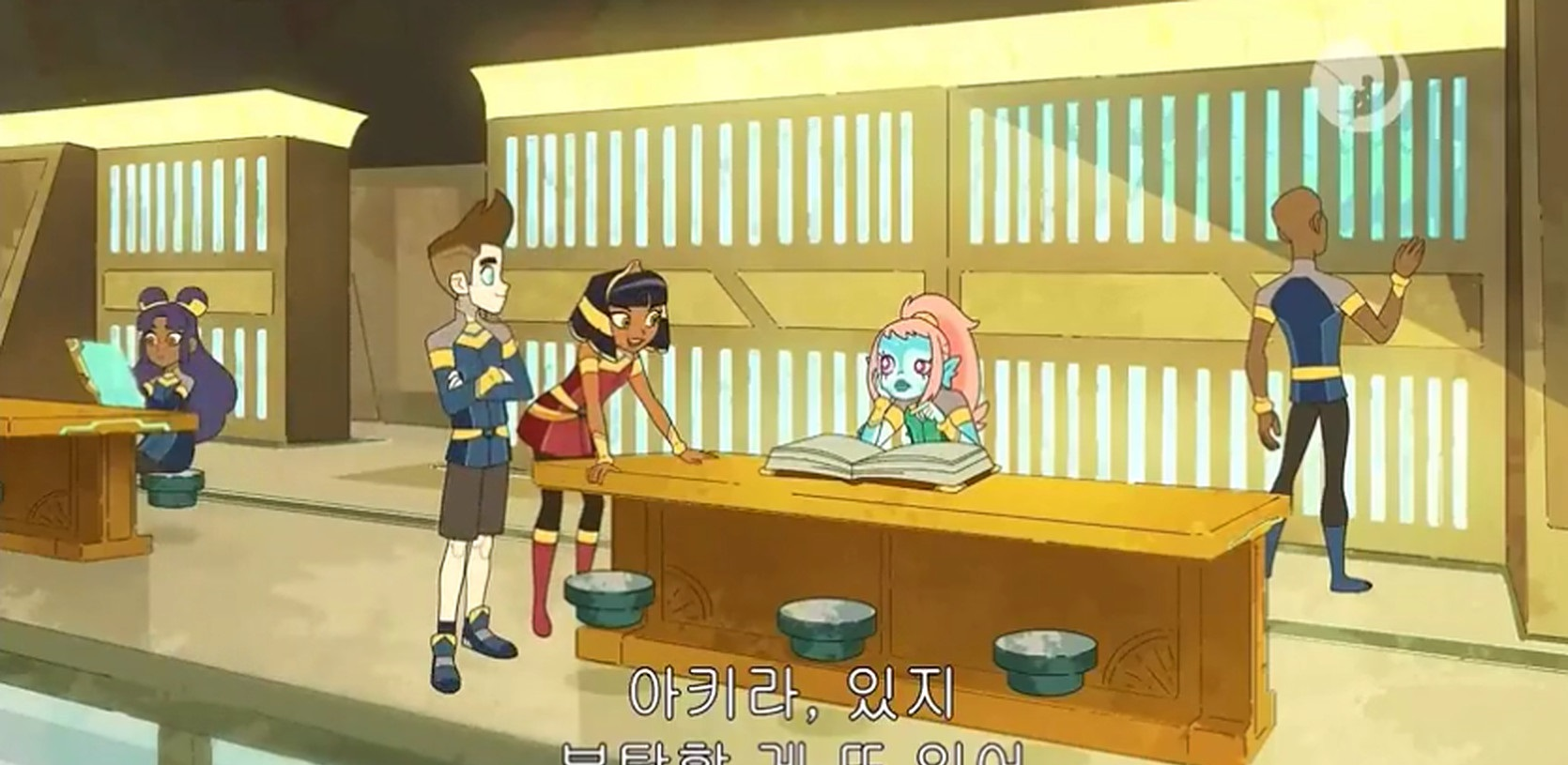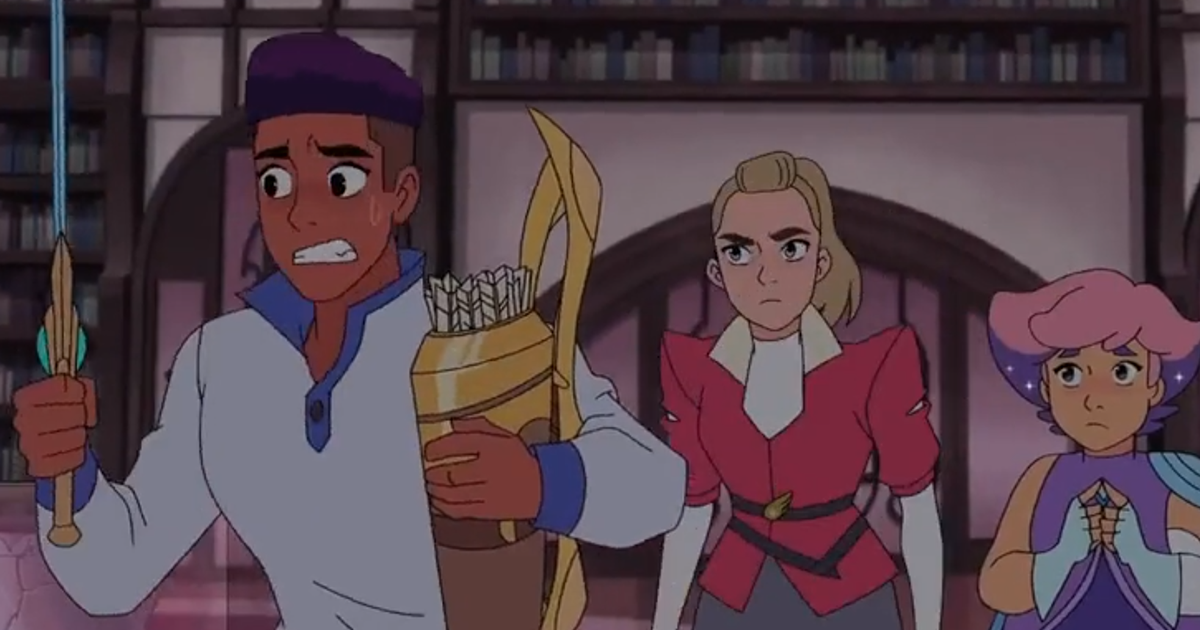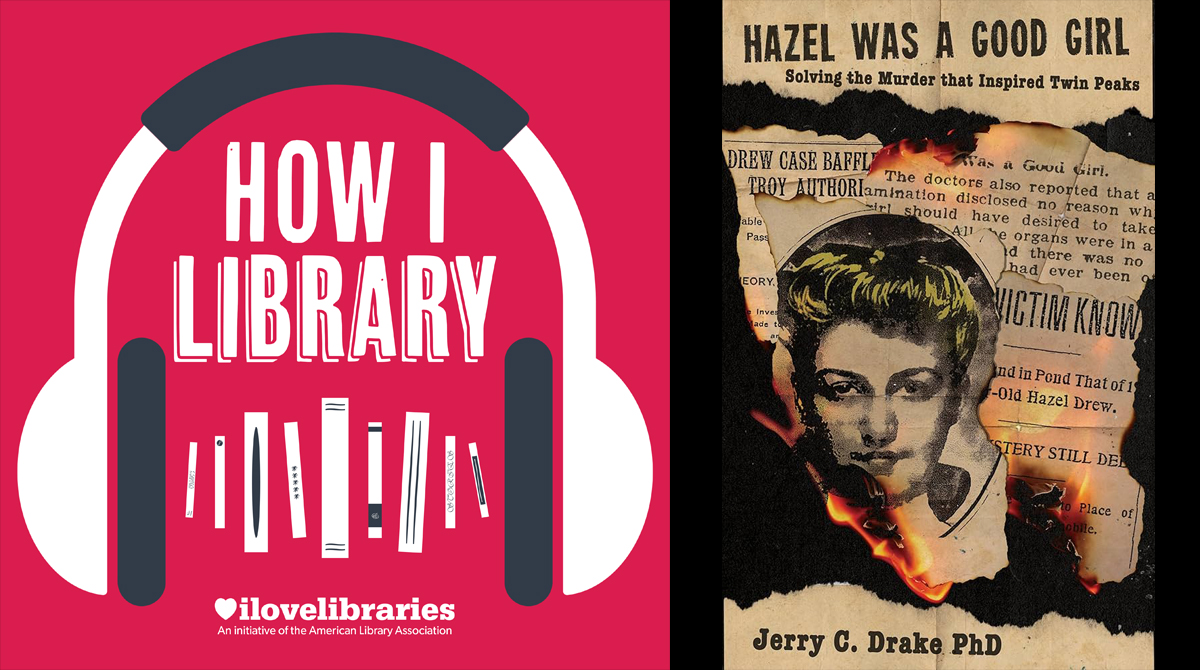When people think about librarians and libraries, they may point to films, live-action TV shows, or even novels. However, one area is often missed: animation. In Hollywood, stereotypes are plentiful, as librarians are used as “shortcuts to propel the plot forward,” in the words of Jennifer Snoek-Brown, author of the Reel Librarians blog. While this generally applies to animation as well, two recent shows buck those stereotypes, depicting libraries and librarians positively.
The first of these shows is Cleopatra in Space, loosely based on Mike Maihack’s graphic novel series and currently streaming on Peacock. The show follows teenage princess Cleo, who has been transported 30,000 years through time and space from Ancient Egypt into the Nile Galaxy. Wrestling with the newfound responsibility of being the “savior of the galaxy” prophesied to defeat the evil tyrant Octavian, she attends an Egyptian-themed futuristic high school on the planet of Mayet to hone her skills. While Octavian has destroyed most of the recorded knowledge available in the galaxy, Cleo’s school library still contains vital information. In the show’s third episode, Cleo travels to the school library after hours with her mentor Khensu, and two of her friends, Akila and Brian. Khensu shows her to the library’s Ancient Egypt section, with only a few physical records contained in a trunk, all accessible in holographic form. (In real life, these artifacts would be housed in a library’s special collections.) This positive depiction is possibly offset by what Cleo does next: dismayed by the lack of records about her homeland, she thinks about her dad, floats in the air, glows pink, then sucks all the electricity of the school and nearby city into her body, causing a massive power outage. The message of this moment is that libraries need adequate resources and support to assist the communities they serve-otherwise there will be information deficits which put patrons at a disadvantage. Libraries are also mentioned throughout the series as a beloved hangout space for one of the main characters. Akila likes to spend her time in the library studying and insists “all the cool students” spend time there too in the show’s 12th episode. In some ways, Akila reminds me a bit of myself in college: while in college, I extensively used the well-endowed campus library to study, research, and relax, even when some of my friends disliked it.

Cleopatra in Space characters study in their school library.
Another animated show, the recently concluded Netflix series She-Ra and the Princesses of Power, prominently features librarians in a few episodes. The season two finale focuses around two middle-aged gay Black librarians, George and Lance, and their library in a magical forest called the Whispering Woods. This portrayal contrasts with the original 1980s series, She-Ra: Princess of Power, where a stereotypical elderly white long-haired librarian aids the protagonists. George and Lance are fathers to Bow, one of the show’s protagonists; in the episode, Bow and his friends, Adora and Glimmer, work together with the librarians to translate an ancient message. Their efforts inadvertently release an elemental monster into the library, and in the havoc that ensues, Bow reluctantly reveals his true identity as an expert archer and rebellion fighter, a secret he has long concealed to his dads. While he expects his dads will rebuke him, they embrace him instead, accepting him for who he is-many viewers see this storyline as echoing family coming-out stories from the LGBTQ+ community. In the 10th episode of the show’s final season, Bow and Glimmer reconnect with the two librarians. Both recount their discoveries: an ancient rebellion against the planet’s first settlers and the existence of a fail-safe for the superweapon in the planet’s core. This information becomes vitally important in the effort by the show’s protagonists to stop the world (and universe) from being destroyed, setting the stage for the groundbreaking kiss in the final episode. On the whole, She-Ra and the Princesses of Power shows librarians as helpful, welcoming, and diverse, a refreshing antidote to more stereotypical media about libraries, which is all too common, even in animated series.
While these are only two examples, there are many more which I am continually reviewing on my blog, Libraries in Popular Culture. If you have any suggestions for popular media about or featuring libraries or librarians, feel free to email me at bhermann@mail.com.
Subscribe to the I Love Libraries newsletter for more fascinating stories about libraries and librarians.




